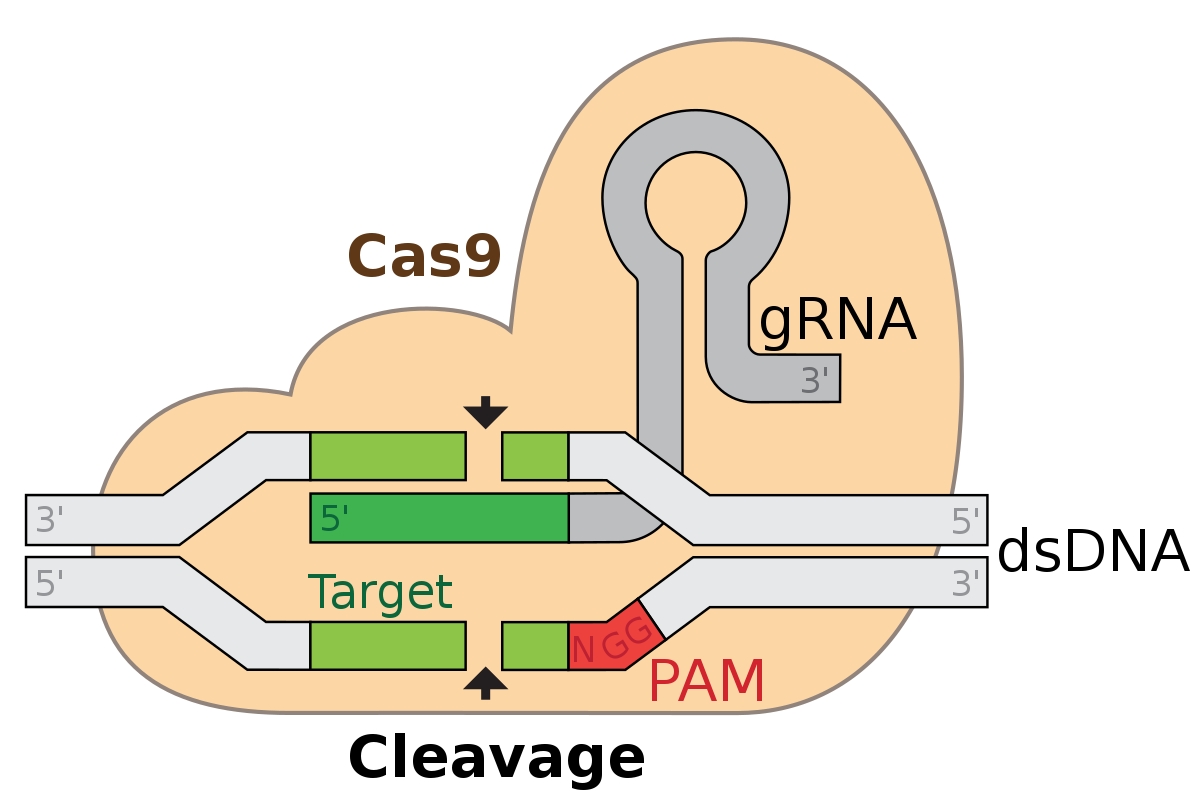CRISPR for Dummies (including myself!)
CRISPR is derived from bacterial immune systems, it is a defense mechanism against viral infections. When bacteria are infected by a virus and survive, they store fragments of viral DNA in their genome. These viral DNA fragments are placed between palindromic sequences, palindromes are a word that reads the same forwards and backwards (i.e. racecar).
On a subsequent infection with the same virus, the bacteria can recognize and destroy the viral DNA using a CRISPR-associated (Cas 9) nuclease. The Cas 9 enzyme uses guide RNA (gRNA) to target specific DNA sequences. The gRNA is composed of an RNA sequence that is complementary to the viral DNA fragment stored after the original infection (crRNA) and a scaffold RNA sequence (tracrRNA). Once the gRNA locates the target sequence Cas9 will create a double-strand break (DSB). DSBs disable the virus because they lack their own DNA repair mechanisms.
This mechanism has been manipulated to create DSBs at the desired locations by providing Cas9 with an engineered gRNA to target specific genes. Once CRISPR-Cas9 creates the DSB, the cell's DNA repair pathways are taken advantage of to either turn off genes or insert new genetic material. Watch pioneer and Nobel Laureate, Dr. Jennifer Doudna, explain CRISPR to us mere mortals.
In our next post, we are going to explore CRISPR Therapeutics AG CRSP 0.00%↑. CRSP is at the forefront of CRISPR gene editing therapeutics, awaiting FDA approval for exa-cel. Exa-cel would be the first gene editing therapeutic utilizing CRISPR-Cas9 to gain FDA approval, it is targeting the BCL11A gene, a protein that halts fetal hemoglobin production after birth. The final decision on the BLAs for exa-cel for sickle cell disease (SCD) and transfusion-dependent beta-thalassemia TDT is expected by Dec 8, 2023 and Mar 30, 2024, respectively.


